-
Car Reviews
- Car News
-
Car Comparisons
Latest comparisons
- Chasing Deals
More practical and now with two extra doors, is the Suzuki Jimny XL a viable family 4×4 SUV? We throw the kids in and give it the week-long test
Whenever I’m in a Suzuki Jimny, tradition dictates I select Sheryl Crow’s My Favorite Mistake from my playlist. Not because I’m particularly a fan of the 90s soft rocker, but because the Jimny represents a high and low point in my car-owning career.
It brought such fun and joy, but was absolutely, totally, a mistake of a purchase.
Despite having a newborn and needing a daily motorway commuter car, I reckoned a 1996 Suzuki SJ40 Sierra (our name for Jimny back then) with soft top and 50kW/102Nm carburettor’d 1.3-litre was a perfectly reasonable choice.

Of course it couldn’t last long. No safety features, the structural integrity of a dried-out snail shell, scant luggage space and no air con without removing the leaky canvas roof.
At 100km/h, gusts of wind had me wrestling the wheel, it’d be at a wailing 4000rpm in fifth gear, and wet roads were the automotive equivalent of Russian roulette.
Which brings me to the new Suzuki Jimny XL. In my rose-tinted mind, it’s the Jimny I needed ten years ago, not the charming little 1996 coffin on wheels.
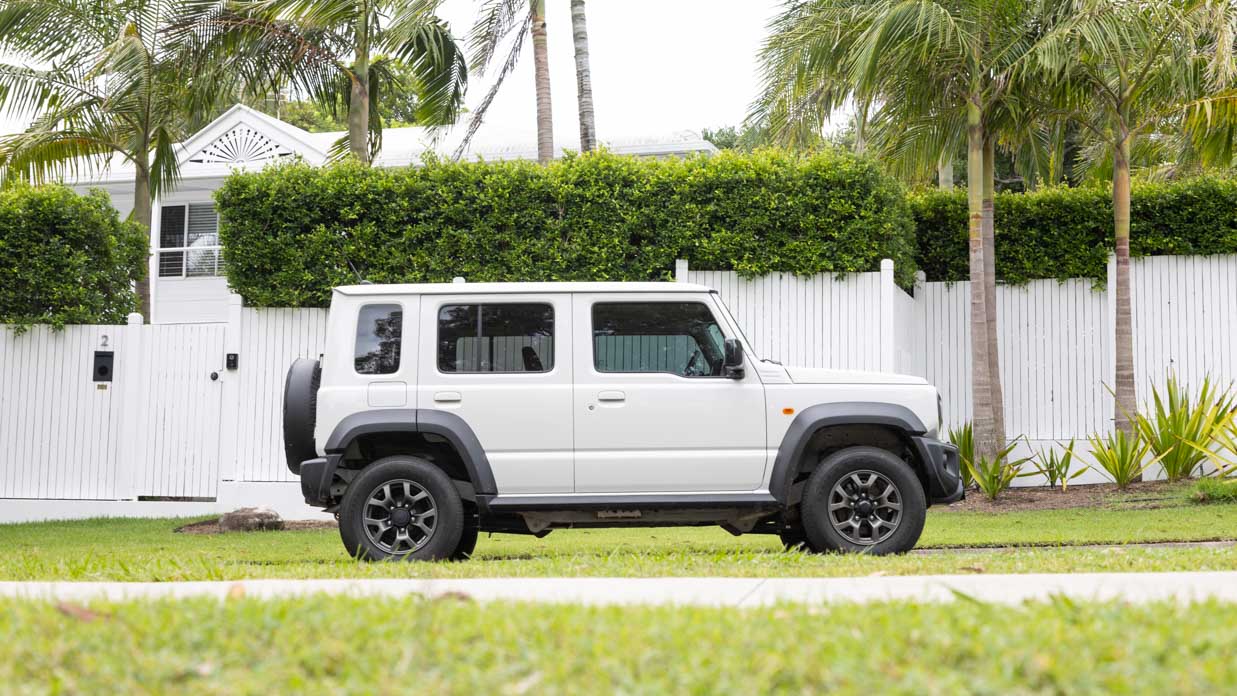
This new Indian-built XL takes the underpinnings of the enduringly popular three-door Jimny, stretches the wheelbase by 340mm, adds another two doors and even offers something that passes as a boot.
Much else is the same. The style, specification, underdone 75kW/130Nm 1.5-litre petrol four-cylinder and not-great safety are common ground between the three-door and five-door Jimnys, but also the lightweight off-road ability that make these Suzis so unique in market.
Which is why my old one was my favourite mistake. As a road car it was something of a disaster, but on my local beach or over deep sand trails it’d happily skip around like a joyful spring lamb.
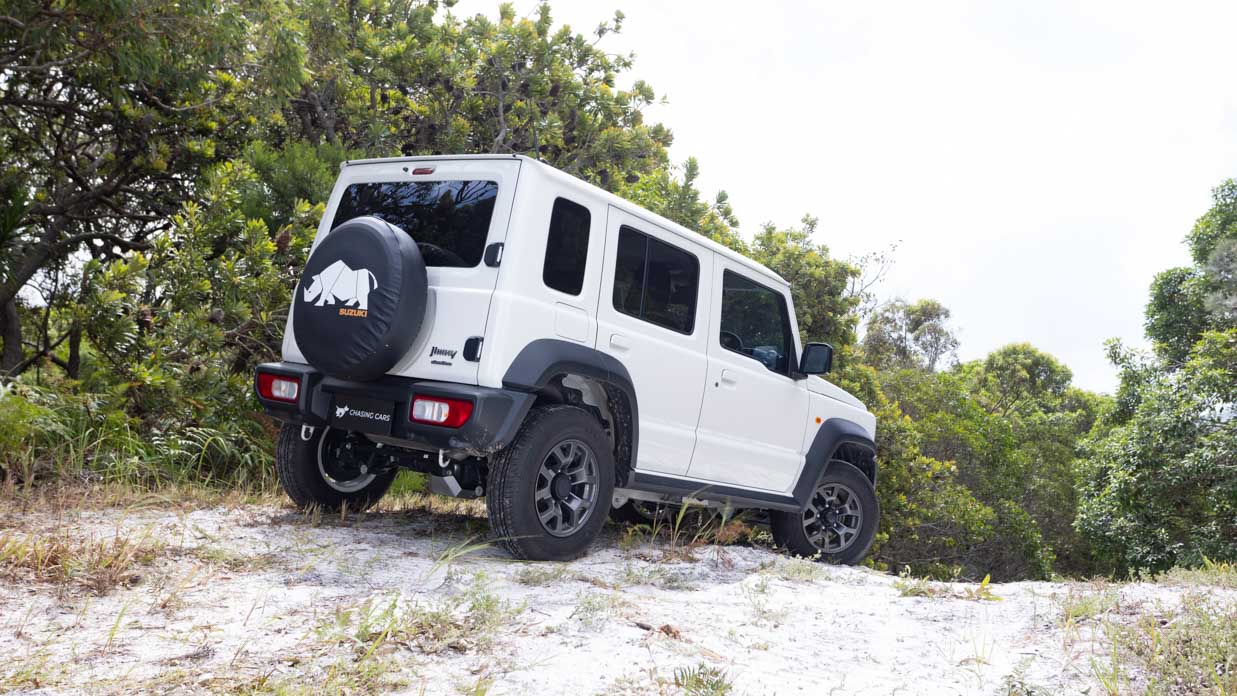
Could this new Jimny XL replicate such fond memories, but this time with my wife and two kids in relative comfort and safety?
And – this is the important bit – should you readers really consider a Jimny XL as a viable daily driver or weekend toy, especially if you have a family to haul around?
With its diminutive size, ladder-frame chassis, genuine 4WD capability and cheap cost the Jimny is rather unique, though if you’re looking to cross-shop the GWM Tank 300 (from $46,990 driveaway) and Jeep Wrangler (from $75,950 before on-roads) share many of these attributes at vastly different price points.
I’d recommend reading deputy editor Curt Dupriez’s excellent in-depth on- and off-road launch review of the XL. It’s your best bet to deep dive breakover angles and tailshaft diameter, while here I’m reporting what it’s like to live with a Jimny LWB as the family car for a week.
What do you get? Just look at that face. One of the most iconic and appealing exterior designs of recent decades, but let’s not sugarcoat it. The stretched five-door Jimny’s a much more awkward looking thing than the perfectly proportioned three-door.
Consider its timeless design thoroughly messed with in the name of practicality.
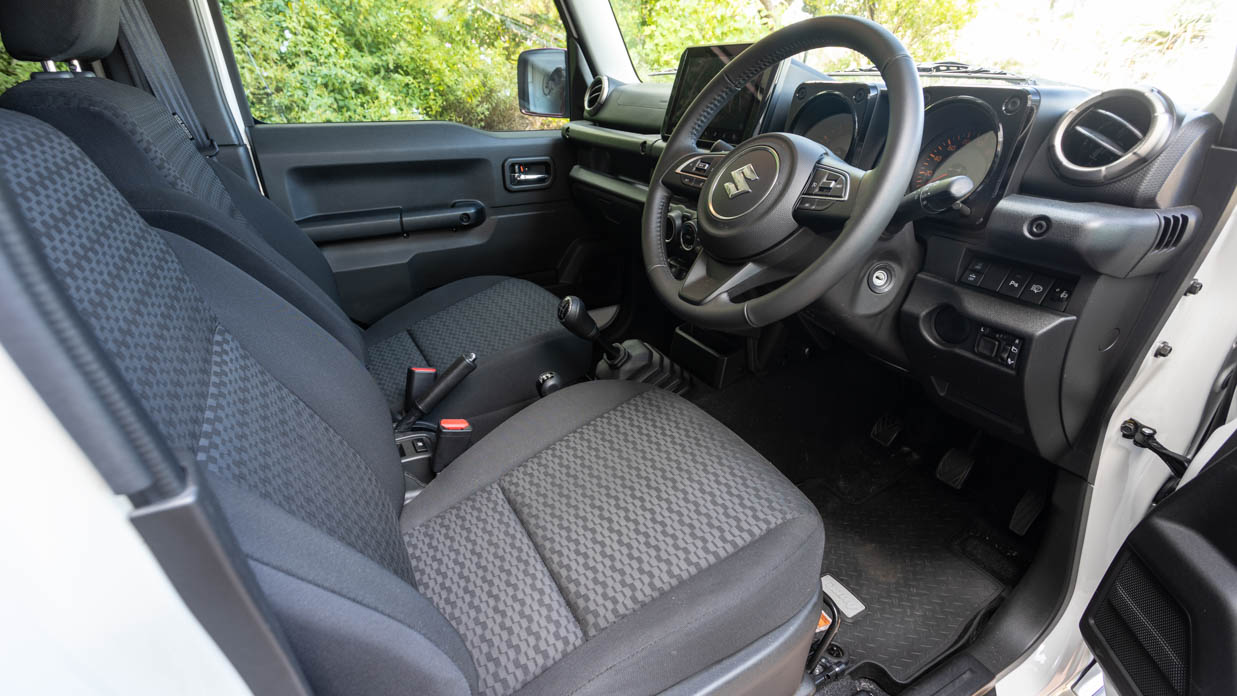
It’s $39,490 drive-away for a manual Jimny XL – $4500 more than the equivalent three-door. It’s an extra $1500 to option a four-speed automatic – $41,990 on the road.
While there is only really one grade available for the XL, a limited edition Heritage grade has recently joined the line-up – just 500 will be offered – all manual only and costing $40,990 drive away.
Standard features include:
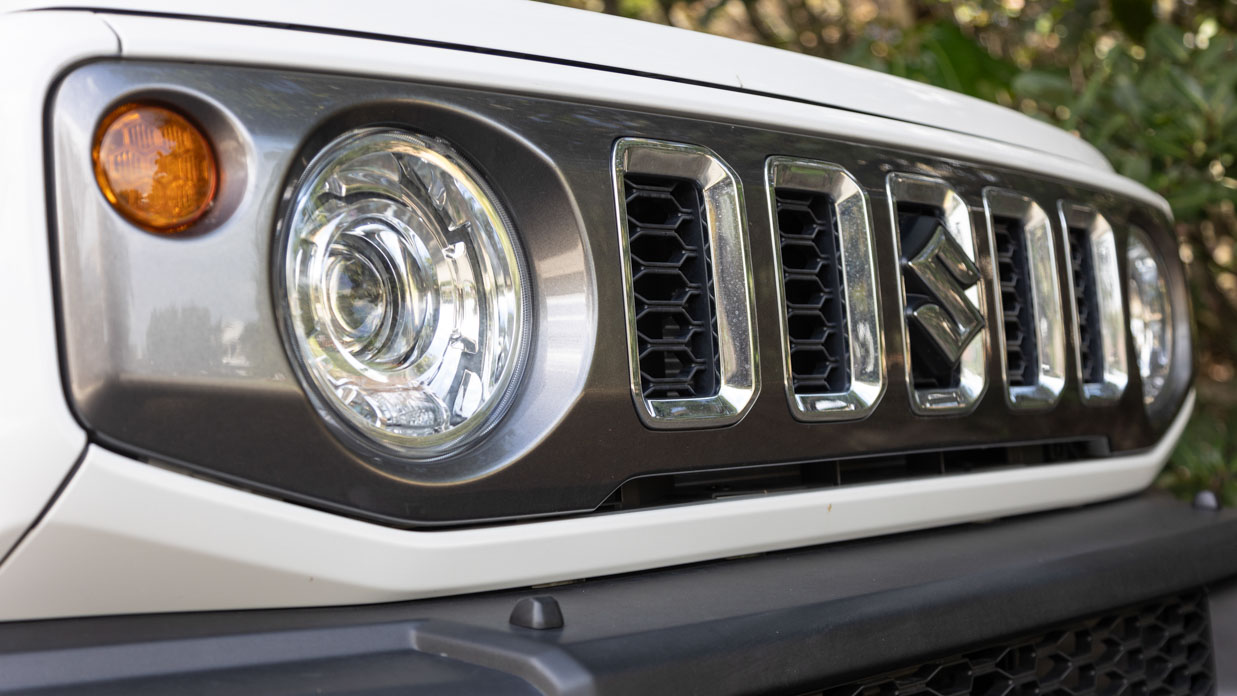
Colours are Bluish Black Pearl, Arctic White Pearl, Chiffon Ivory metallic with black roof, Sizzling Red metallic with black roof, Granite Grey metallic and Jungle green.
It’s an extra $745 for single-tone metallic, or an extra $1345 for two-tone metallic.
As a road car it’s a challenging sell.
There’s a jittery ride in town, and while steering is easy and light, steering response is comically loose – you can move the wheel a fair distance before there’s any response from the front end.
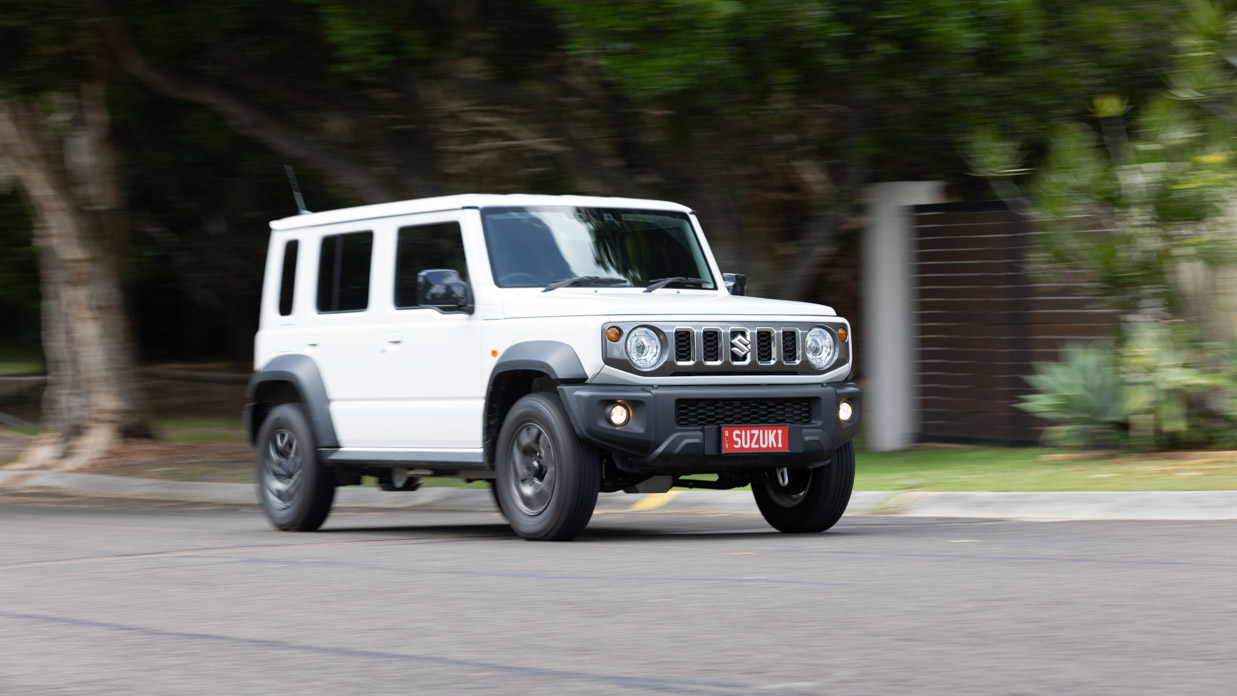
It’s wallowy and leans in turns, and you really must take care on wet roads or it will slip and slide around. The 75kW/130Nm 1.5-litre soon runs out of puff on hills too – you’ve really got to row through gears and keep revs high to ensure momentum.
While I’m picking, the turning circle’s pretty woeful. It may be the long-wheelbase Jimny, but at just under four-metres, it’s similar in length to a Toyota Yaris city car. Yet manoeuvring is more akin to a much longer car.
On the highway at 110km/h the engine’s working hard, sitting at a noisy 3250rpm. A sixth manual gear would really help here. Combined with wind noise from the brick-like aero, some tyre roar, and a fair bit of buffeting when it’s windy, you quickly realise the Jimny’s talents lay elsewhere.
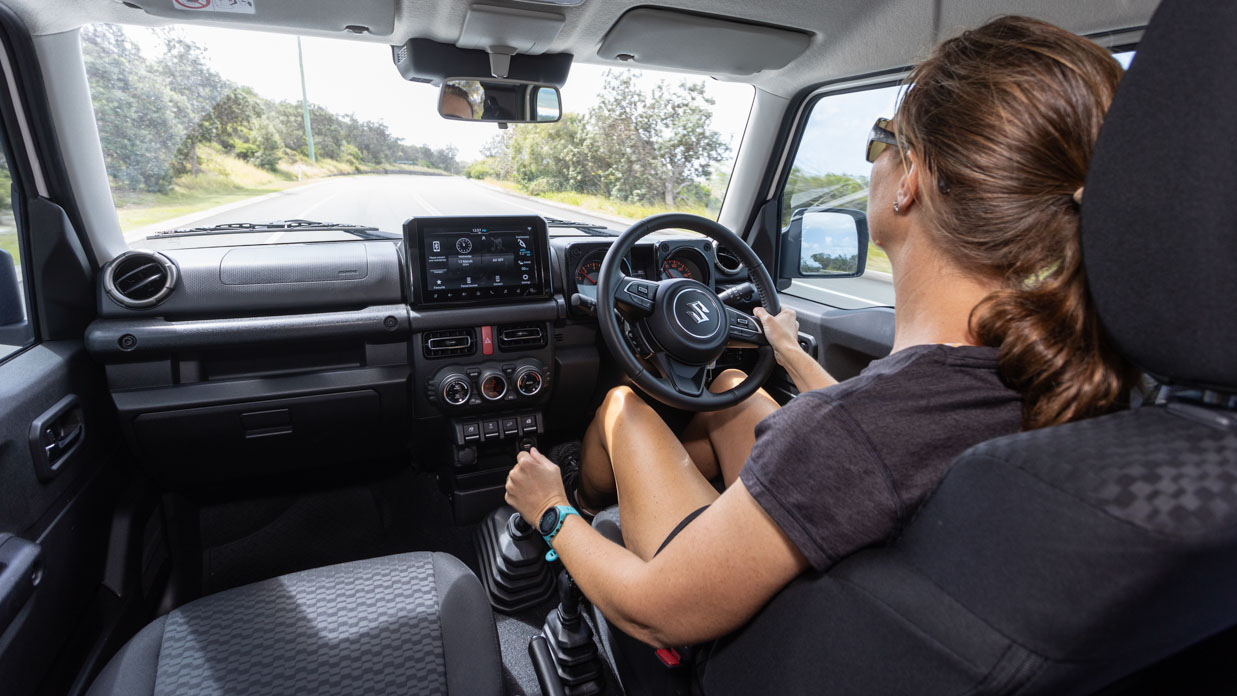
And here’s the thing. Get it in the right scenario and it’s a talented and highly capable little funster.
You sit surprisingly high, so visibility’s superb. It’ll zip between traffic well enough, and its reasonably small size makes it simple to park. If you embrace the old school, there’s happiness found in the long throw manual gear shifting and light clutch pedal. It really is like motoring from another time.
Then you head off-road. Its robust ladder chassis, 210mm ground clearance and decent approach and departure angles give confidence, but its trump card is lack of weight.
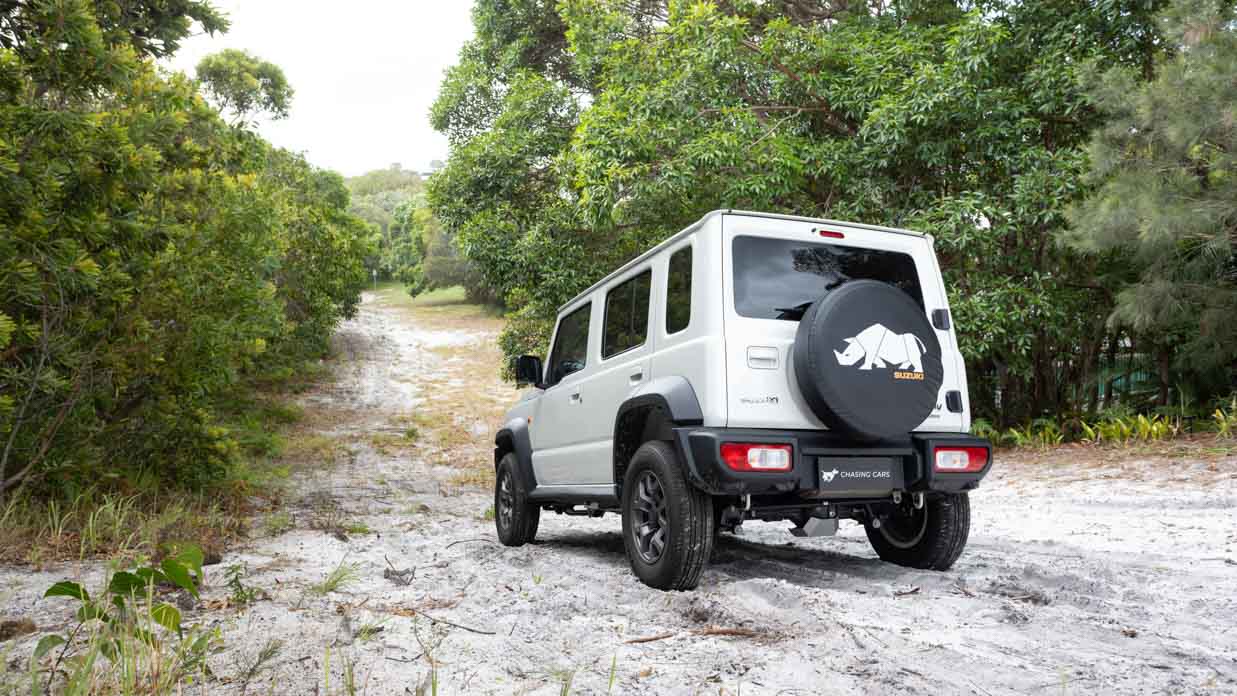
At 1200kg there’s simply no other new 4×4 that comes close to its minimal mass, meaning it’ll skip over rough or sandy surfaces in a manner lardy large 4x4s only dream about.
It’s only 90kg heavier than a three door Jimny, so still feels a lightweight when bounding along rough stuff. We tackled some seriously soft sand tracks, and I swear the Jimny was more comfortable to ride in here than it was at any point on the on-road test.
If inspires huge confidence, happily ploughing over trails in playtime mode. In gnarlier stuff, the shift to low range needs a bit of muscle (no clever electrics here), but once in, there’s solid control to be had.
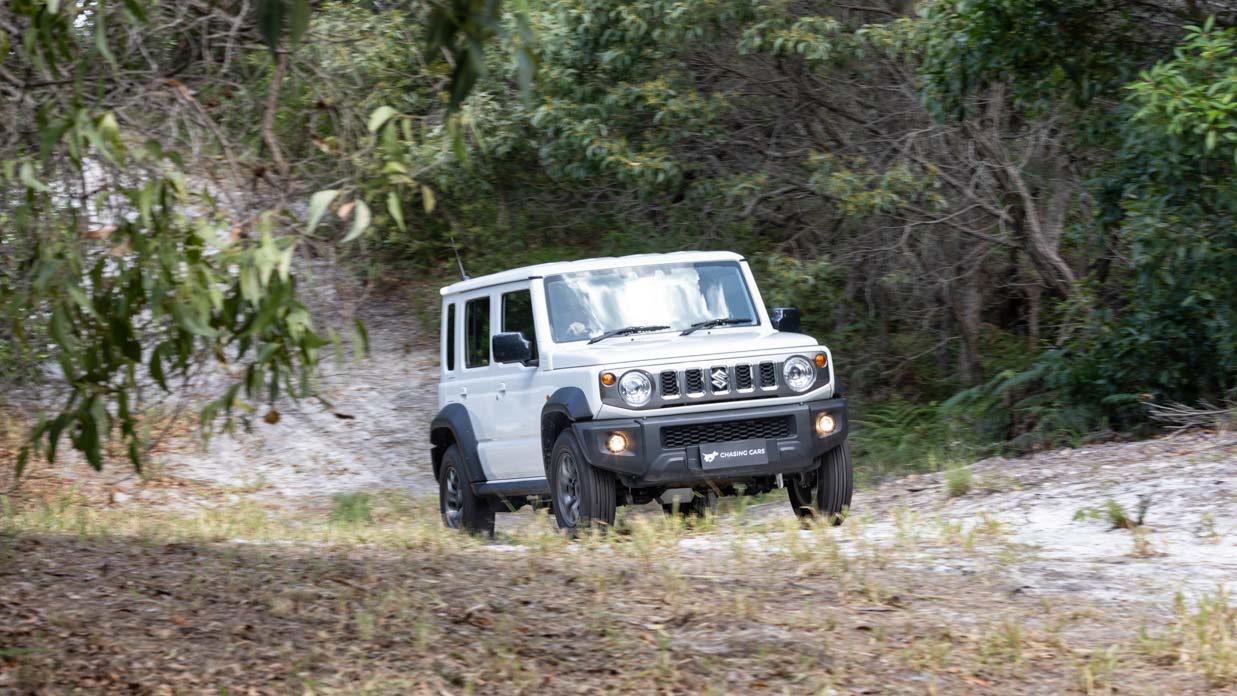
Sure, the engine screams hard, but you always feel the Jimny’s taking such things seriously, and soldiers on through deep sand in a manner that would trouble heavier lumps.
Locking diffs would be nice, but not needed in our experience, as Suzuki’s AllGrip Pro 4WD traction control applies braking force to any slipping wheel, then redistributes torque equally to the others. It’s an impressive, well-suited system, and you really must work very hard to get bogged.
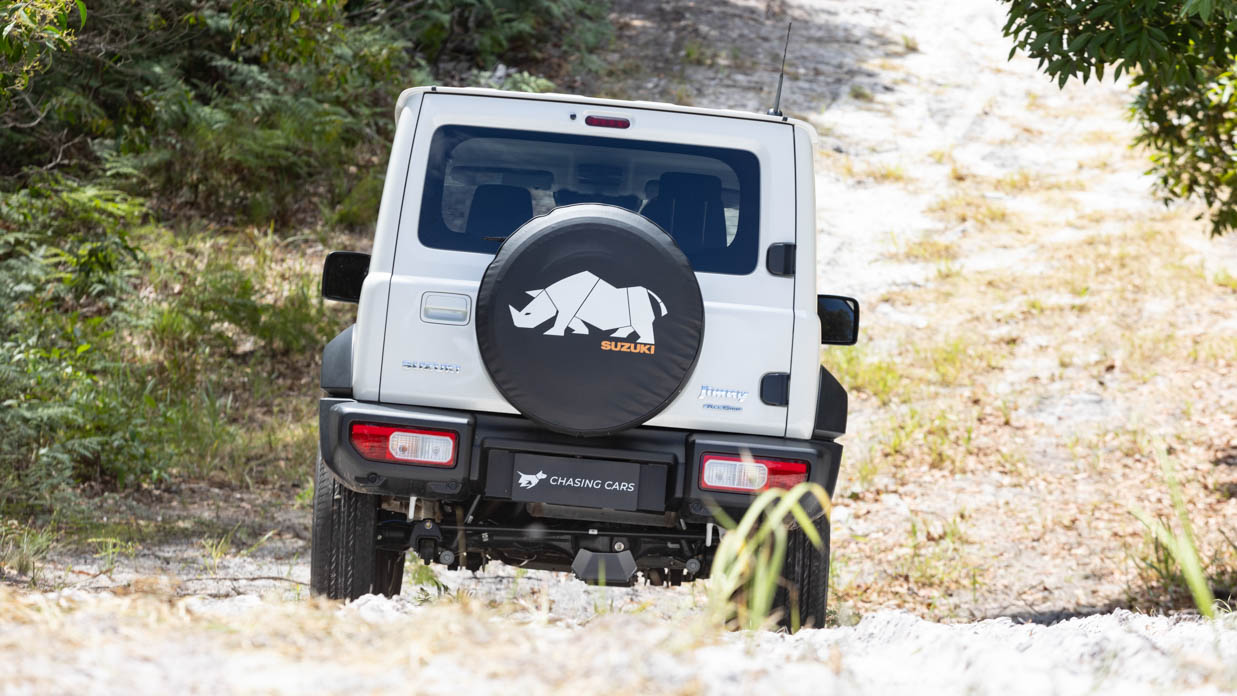
And really, it’s reassuringly smile-bringing off-road. It’ll slide up skinny trails where wide SUVs and utes struggle, and you build such belief in the Jimny’s talents you just enjoy the ride. Soon, you forgive all its on-road limitations and convince yourself you need one in your life.
But one final gripe. The climate settings didn’t function brilliantly during our test. Setting it to 18C or 25C seemed to make little difference to cabin temperature.
Let’s dive into the positives. Rear riders now have their own back doors, so there’s not the contortioning required to get behind a three-door’s front seats, which is a merry nightmare.
Be aware there are only two rear seats and two seatbelts, so no families of five need apply. Head and leg room in the back are perfectly tolerable for adults, seats are quite upright but comfy, while it’s significantly less claustrophobic than in the three-door – this XL’s back windows actually open, for instance.
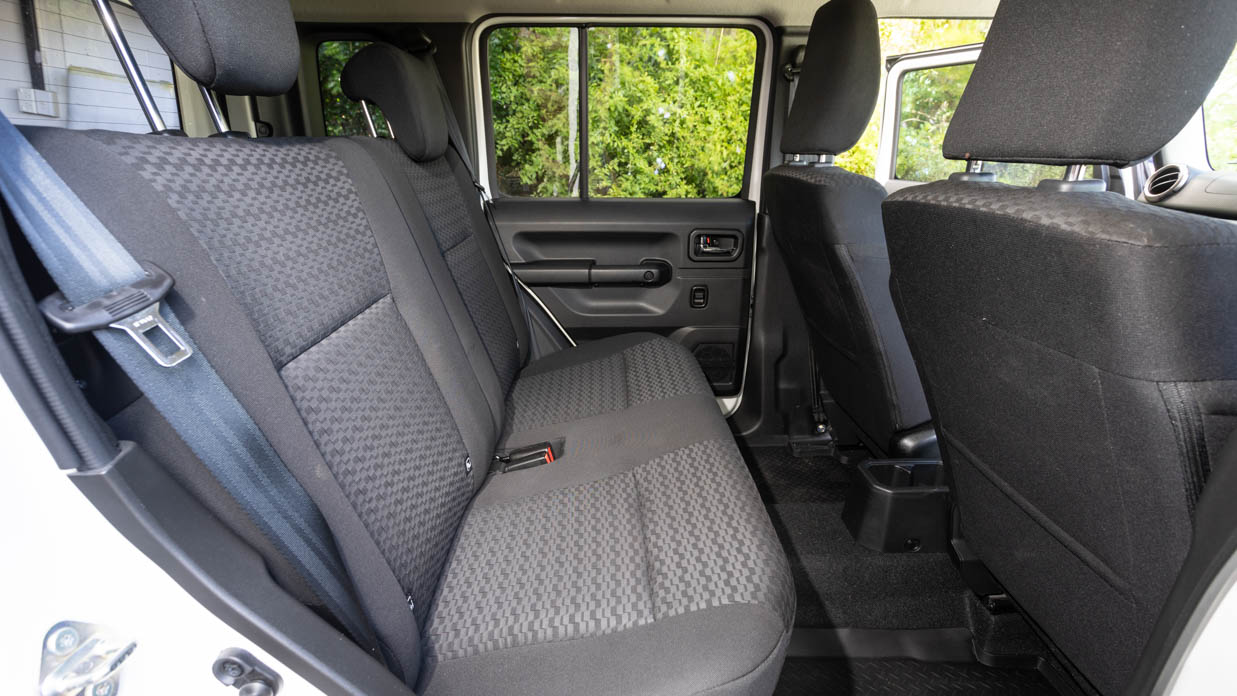
Our two kids (12 and 9) reported ample space, but did grumble about no rear air vents, no USB ports, and door plastics being of the hardest, scratchiest kind.
A SWB Jimny’s boot is a shoebox-like 85L, but in the XL there’s much more usable space at 211L. Doing the school run, we could easily fit in the two kids’ school bags, swim bags plus two musical instruments – there was no chance in the three-door Jimny.
Dropping the rear chairs brings 332L of space – I just about squeezed in a child’s mountain bike. Sadly, rear seats not folding flat is a missed opportunity, but at least some space is saved mounting the full-size alloy spare on the swinging rear door.
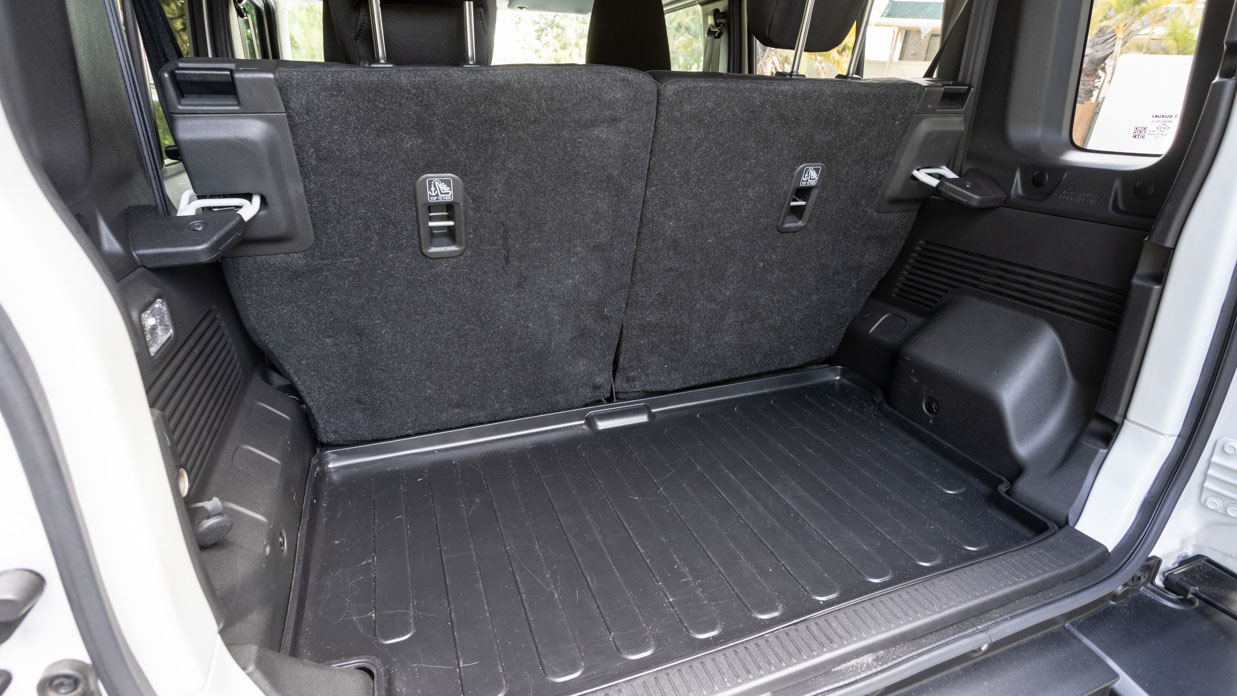
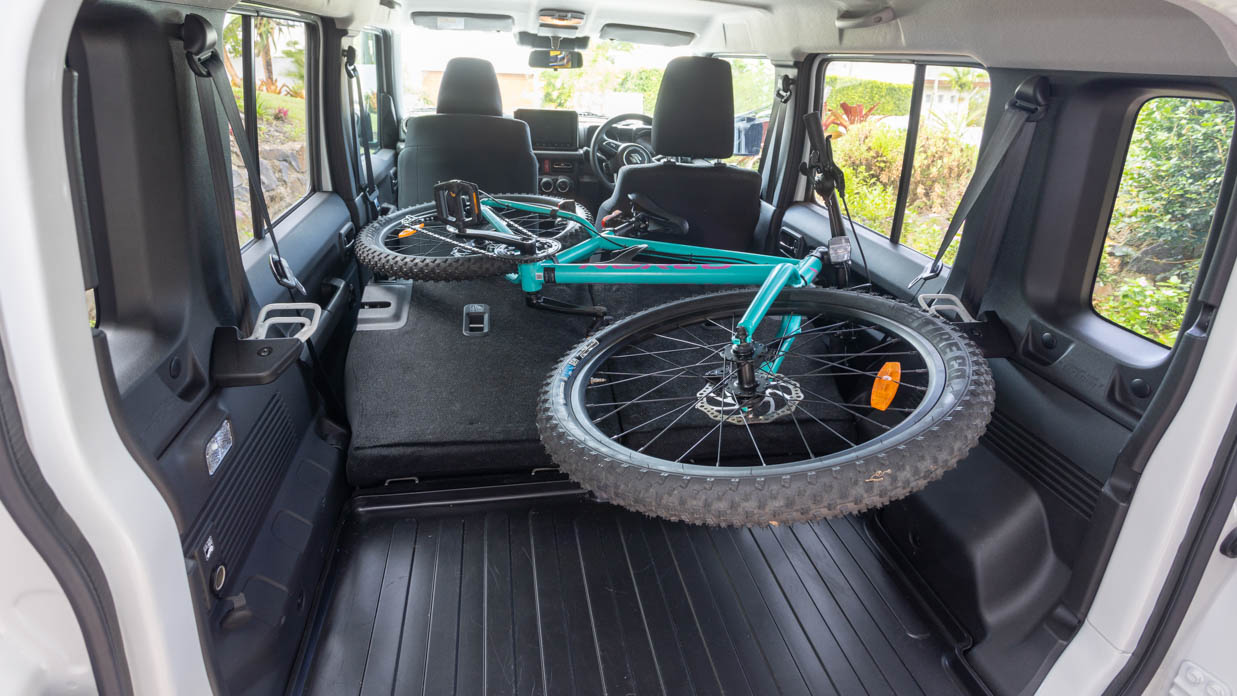
Front occupants experience a mix of modern and ancient. If you yearn for simpler times, you’ll embrace the Jimny’s simple analogue speedo and tacho, rotating dial climate controls, robust buttons, manual handbrake and a dashboard that feels hard enough to have been hewn from granite.
It’s nostalgia overload for old-model Sierra / Jimny owners. My old SJ40 Sierra first launched in 1981, and over four decades later, this ’24 XL feels remarkably similar inside.
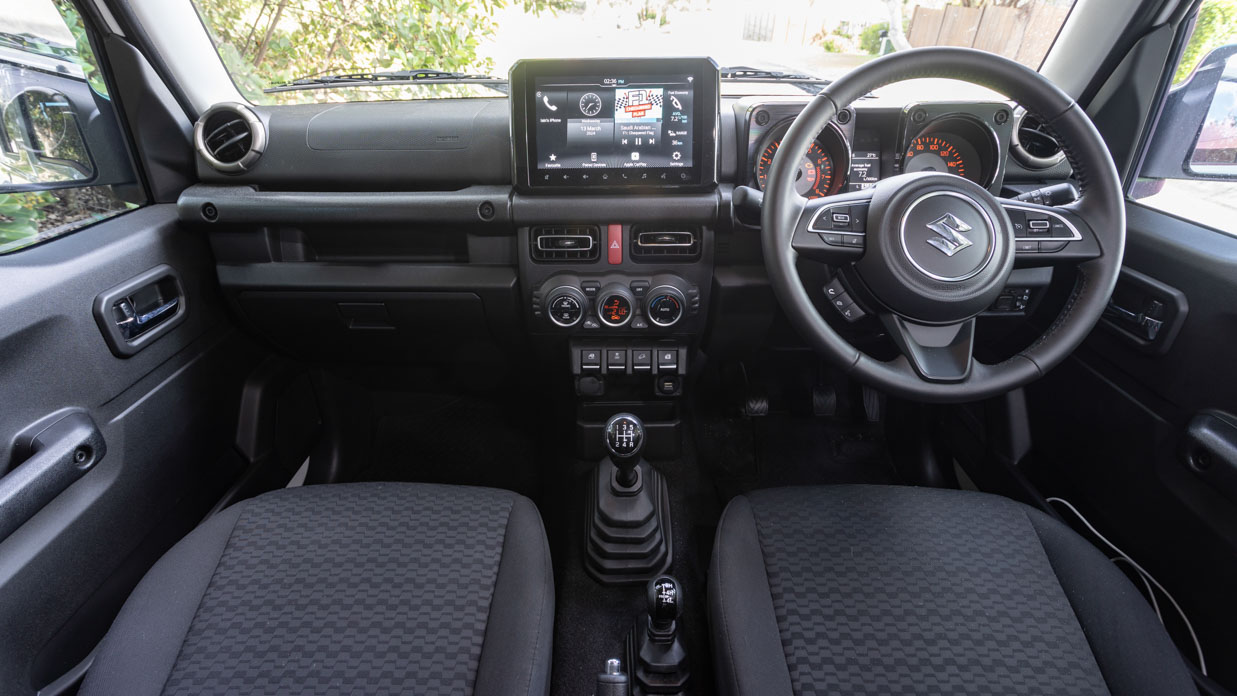
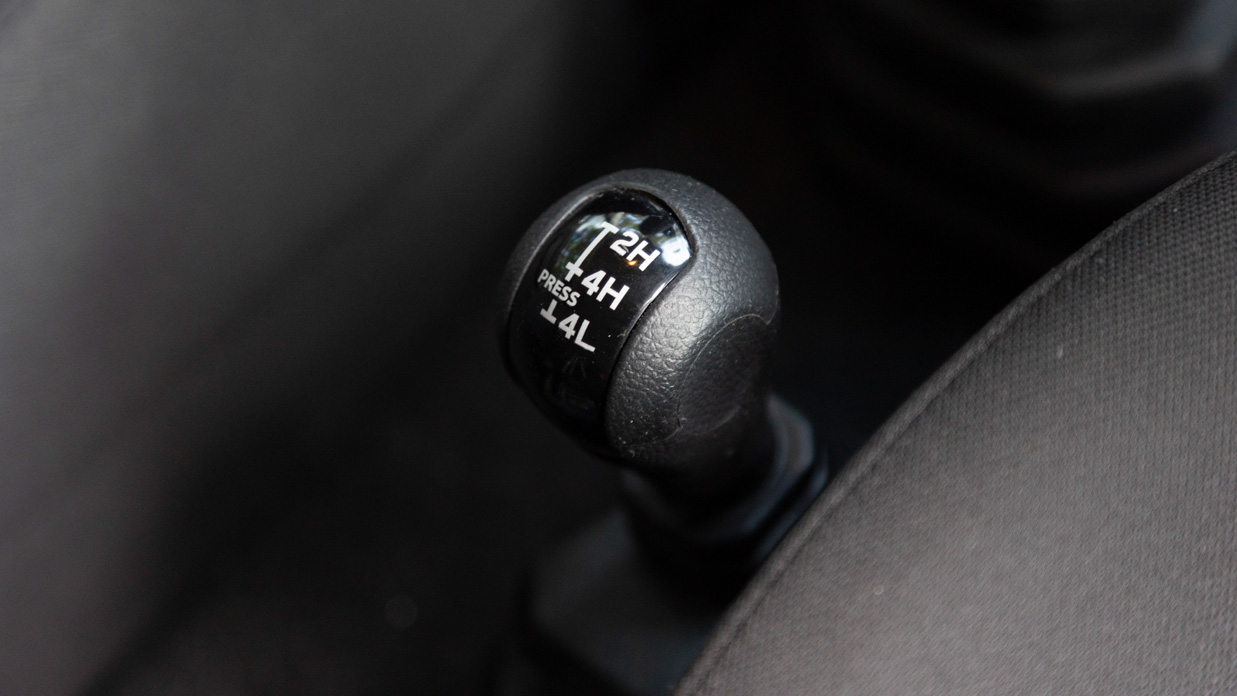
You put a metal key in the ignition, the orange font on the dials feels heritage listed, there’s excellent visibility through massive side windows and an upright windscreen, and I swear the rubbery boots at the base of the gear shifter and 2H-4H-4L lever are identical to my old Sierra’s.
Cloth seats feel reasonably hard wearing but a bit cheap, and while I appreciate the door cards have been kept very skinny to maximise cabin space, must they be so rock solid? Off-roading, you wear your elbow away on the plastic arm rest.
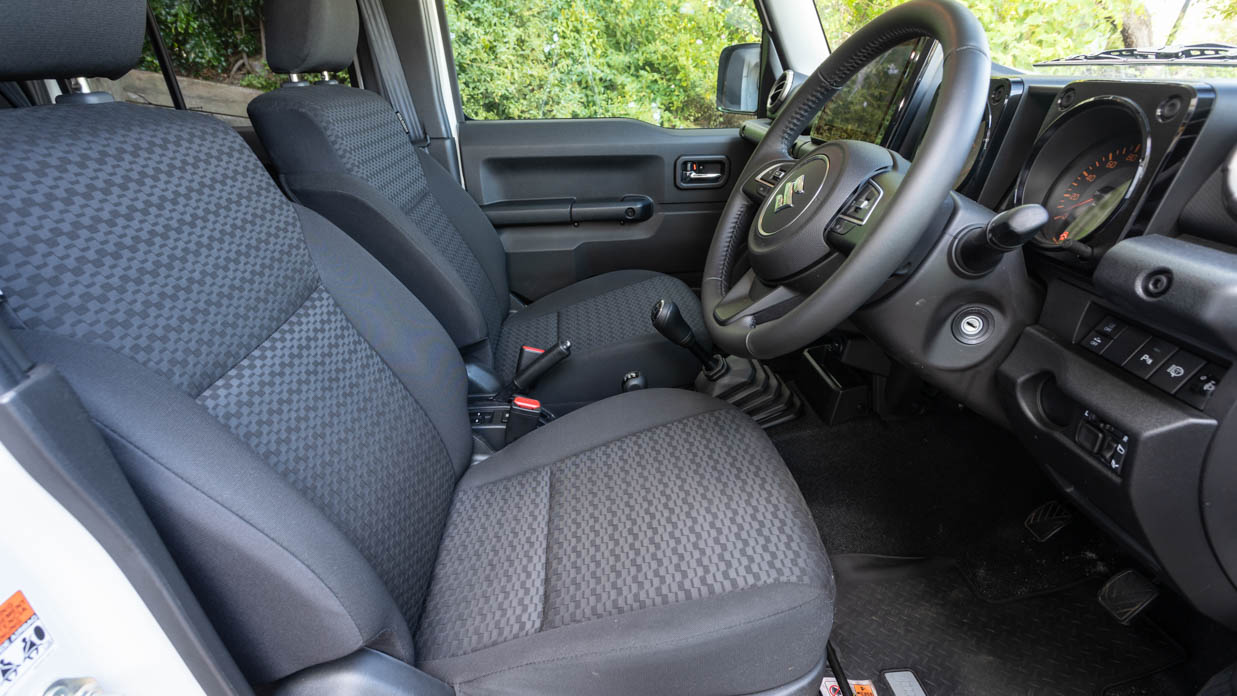
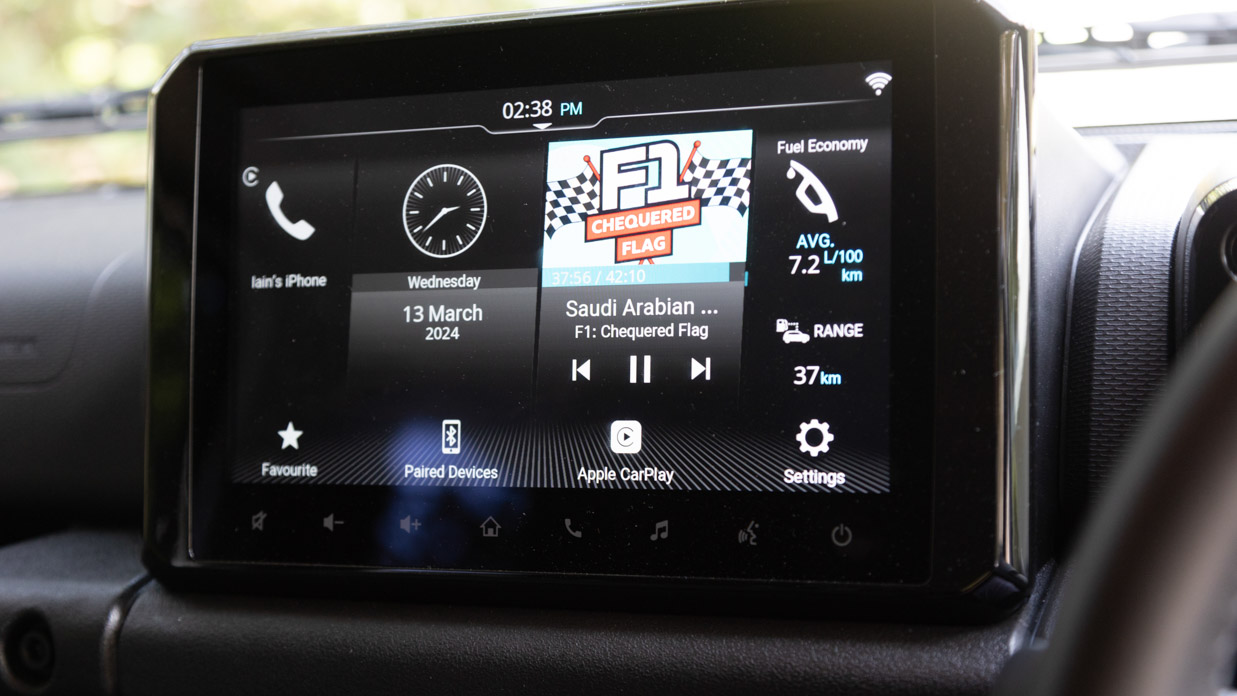
Storage is very scarce – just two cup holders behind the handbrake – the steering wheel won’t adjust for reach, and electric window buttons are in the centre console rather than the front doors themselves.
The 9.0-inch infotainment screen’s sizeable but basic, although running wireless Apple CarPlay and Android Auto’s a big win. But a single USB-A port’s very stingy.
If we circle back to my 1996 Suzuki Sierra, the 2024 Jimny XL has come on leaps and bounds on the safety front. But by modern standards, it’s well behind other small SUVs.
As a titchy, lightweight, body-on-frame 4×4 with focused off-road abilities, we can cut it some slack – it’d be unfair to expect it to perform as well as a very on-road specific monocoque rival.
But don’t stick your head in the sand either, especially if you plan to use one as a family vehicle. It lacks really useful driver assist kit like blind spot monitor and rear cross traffic alert, while there’s no ANCAP safety rating given.
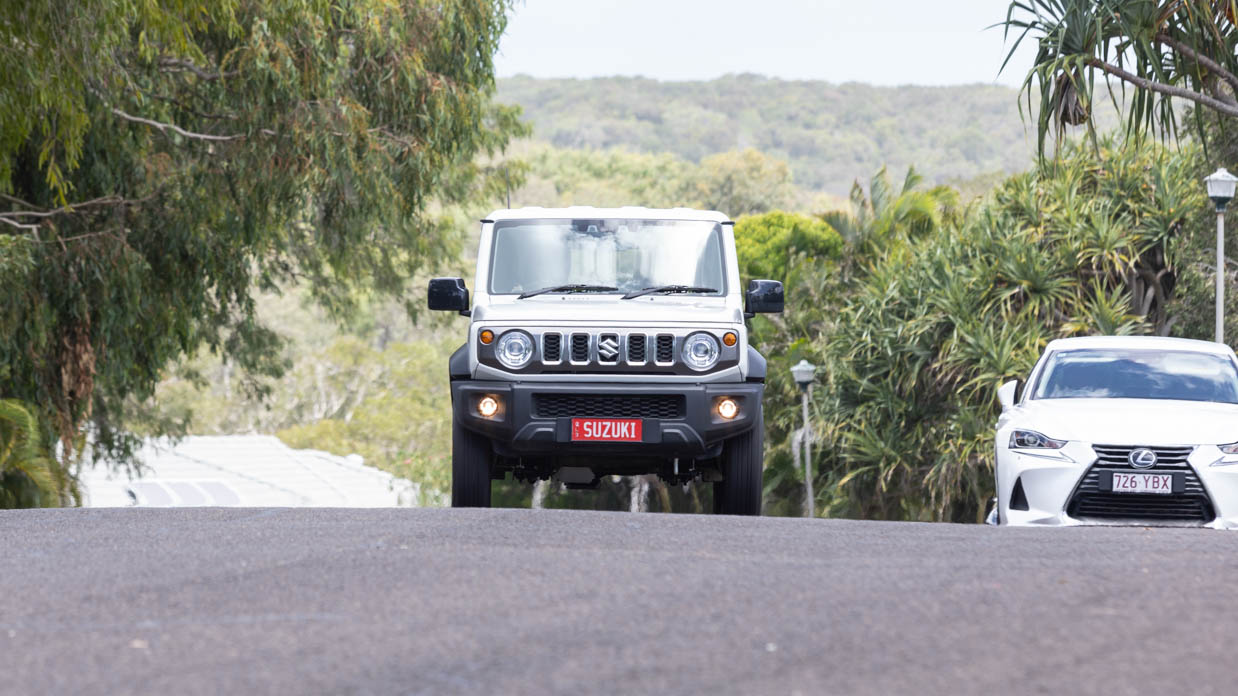
The three-door Jimny scored a below-par three stars with ANCAP back in 2018. Most of its poor marks were for safety assist omissions and in the pedestrian impact test. More positively, adult occupant protection was a fair 73 per cent, while child occupant protection was 84 per cent.
But remember these results were for the Japan-built three-door, not our Indian-built five door. How it would perform in a crash test remains unknown.
The little naturally aspirated engine is a bit of a drinker considering its size. The quoted 6.4L/100km (manual) and 6.9L/100km is thirsty for a 1200kg by modern standards, though that’s still significantly less consumption than its nearest competitor (in terms of size at least) – the three-door Jeep Wrangler.
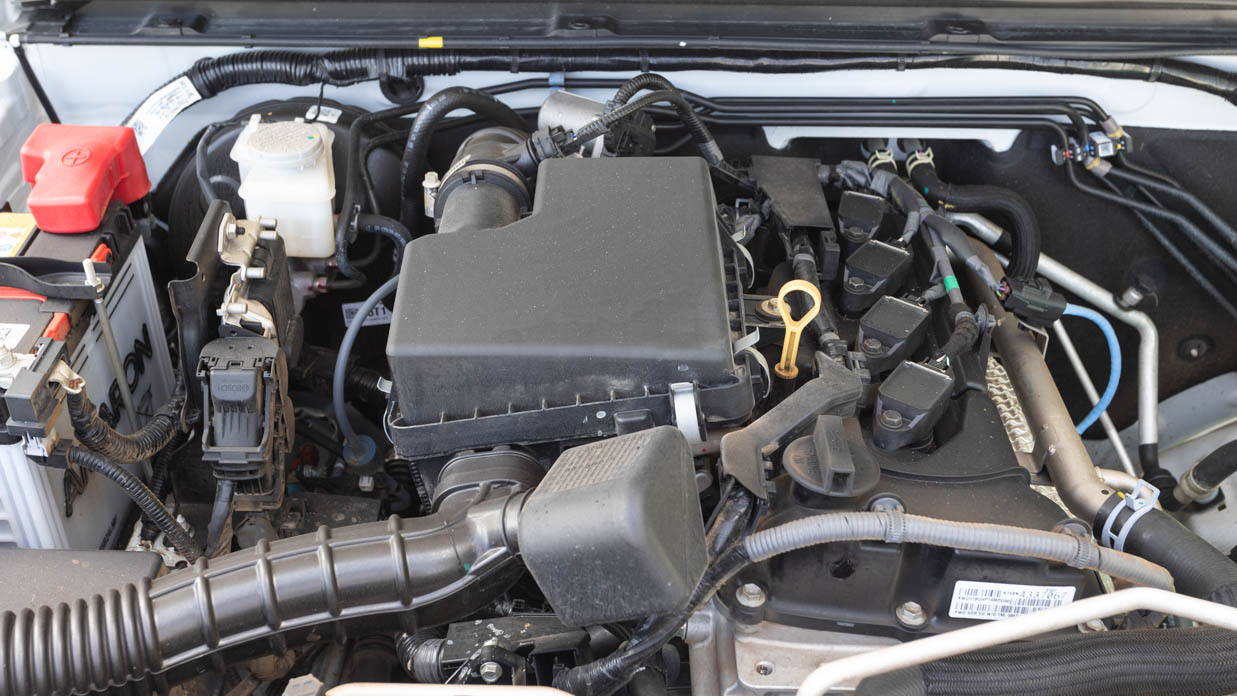
Our test with the five-speed manual saw an average of 7.2L/100km over about 600km of highway, town and beach use.
Warranty’s an industry-average five-years/unlimited-kilometres; there’s capped price servicing for five-years/75,000km, and visits are needed every 12 months/15,000km. Current pricing is $2265 for the first five, which is on the chunky side.
There are few harder cars to score than a Jimny XL. Looking through my results for the cabin, tech and drivability the numbers look lowly indeed, but put this car in the environment it was designed for an it’s a nine, even ten out of ten car.
Hard to live with on road, but your full-of-fun best friend off-road. Have one as your weekend toy rather than daily driver and it’ll become a loved member of the family.
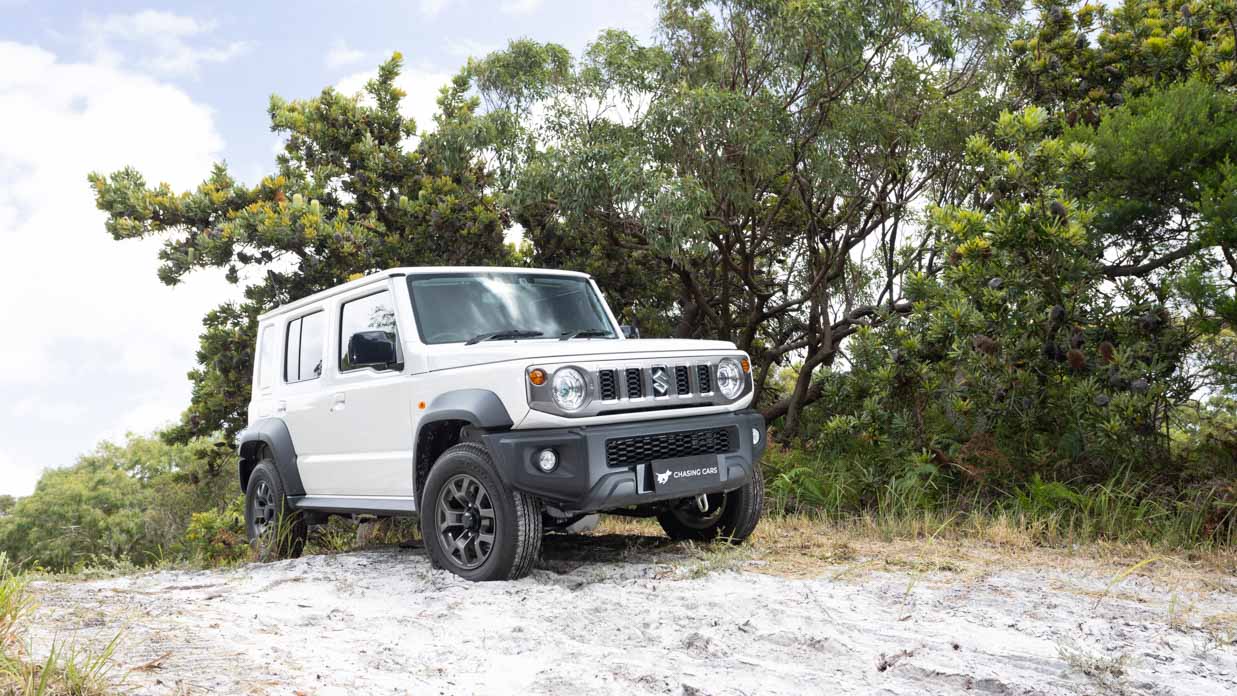
Despite its gawky extended wheelbase it still looks wonderful, if not as perfectly formed as the tiny, boxy three door Jimny. But if you need extra space and happier rear travellers, this XL’s a superb addition to the Jimny range. Especially as little of its off-road talents have been compromised.
But don’t confuse it with an everyday family SUV. The on-road drive, cabin comfort and safety are all questionable if you’re carting around kids. Ensure you’re a regular off-roader if you buy one of these Suzuki 4x4s.
If you are, it’s as bloody brilliant as it’s always been, but now with five doors. And you can guarantee rock solid resale too.
Key specs (as tested)
About Chasing cars
Chasing Cars reviews are 100% independent.
Because we are powered by Budget Direct Insurance, we don’t receive advertising or sales revenue from car manufacturers.
We’re truly independent – giving you Australia’s best car reviews.
The estimate provided does not take into account your personal circumstances but is intended to give a general indication of the cost of insurance, in order to obtain a complete quote, please visit www.budgetdirect.com.au. Estimate includes 15%^ online discount.
^Conditions Apply
Budget Direct Insurance arranged by Auto & General Services Pty Ltd ACN 003 617 909(AGS) AFSL 241 411, for and on behalf of the insurer, Auto & General Insurance Company Limited(ABN 42 111 586 353, AFSL 285 571).Because we don’t know your financial needs, we can’t advise you if this insurance will suit you. You should consider your needs and the Product Disclosure Statement before making a decision to buy insurance. Terms and conditions apply.
Indicative quote based on assumptions including postcode , 40 year old male with no offences, licence suspensions or claims in the last 5 years, a NCD Rating 1 and no younger drivers listed. White car, driven up to 10,000kms a year, unfinanced, with no modifications, factory options and/or non-standard accessories, private use only and garaged at night.
^Online Discounts Terms & Conditions
1. Discounts apply to the premium paid for a new Budget Direct Gold Comprehensive Car Insurance, Third Party Property Only or Third Party Property, Fire & Theft Insurance policy initiated online on or after 29 March 2017. Discounts do not apply to optional Roadside Assistance.
2. Discounts do not apply to any renewal offer of insurance.
3. Discounts only apply to the insurance portion of the premium. Discounts are applied before government charges, taxes, levies and fees, including instalment processing fees (as applicable). The full extent of discounts may therefore be impacted.
4. We reserve the right to change the offer without notice.